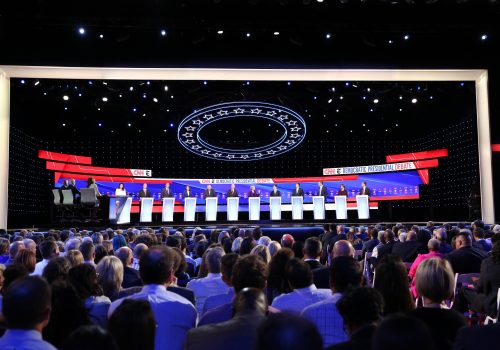Given the urgent need to decarbonize all sectors of the US economy, one of the broadest policy options that could steer both energy production and consumption in the right direction is the notion of putting a price on carbon. How that should be accomplished—whether through a carbon tax system like fee-and-dividend or trading schemes like cap-and-trade—remains in question. The first blog post in this series looked at the political feasibility of putting a price on carbon, while the second post examined the role that the private sector can play in the absence of a carbon tax through shadow carbon pricing. Regardless of the design of carbon pricing, an economic system accounting for the externalities of carbon would reshape the economy—both the prices of actual energy sources and the costs of end products that depend on energy in their production. This post looks at carbon intensity by sector and makes predictions about consumer goods and behavior that might result from putting a price on carbon.
A carbon price would greatly affect the costs of different energy sources, and the repercussions of that energy cost reordering would have repercussions throughout the supply chain. Under a carbon pricing system, coal loses, while renewables and nuclear win, and “the retail price of gasoline, diesel, and jet fuel, as well as natural gas and propane [increases] in proportion to their carbon intensity.” This sheds some light on the implications of a carbon price system for the supply side of energy, while demonstrating the importance of preempting the shift away from fossil fuels and towards low-carbon energy sources now.
However, a carbon price would not just impact energy technologies themselves—it would also affect the costs of products based on the carbon intensity required in their manufacturing. For example, the industrial sector accounted for 32 percent of US energy use by sector in 2017, with bulk chemical, refining, and mining industries representing the most intensive users of energy, which “combined accounted for about 58% of total US industrial sector energy consumption.” Some of these industrial sectors will likely be difficult to decarbonize due to their high energy intensity and because the technologies that could aid their decarbonization, especially hydrogen and carbon capture, utilization, and storage (CCUS) are not yet operating at the necessary scale. However, other sectors in this category may find it easier to switch to renewable or low-carbon energy sources; for example, a Greentech Media article noted that “the reality is that mining companies are increasingly adopting renewables of their own accord.”
However, there will also be a burden on the smaller industrial sub-sectors to decarbonize. Among them, construction accounts for 7 percent of energy demand; paper production, 6 percent; iron, steel, and aluminum together, 6 percent; agriculture, 5 percent; and food processing, 5 percent. Some of these—namely agriculture and food processing—may be somewhat easier to decarbonize, while the others will likely face greater challenges. In order to decarbonize the manufacturing sectors in the second tier of carbon-intense products, corporations will have to choose between trying to sell common goods—paper, iron, steel, aluminum, and certain food products—at much higher prices; relying on low carbon energy sources for manufacturing uses, which could also entail higher costs that would be passed on to consumers; or entirely changing the ways in which products are made. Sectors that are challenging to decarbonize may see higher prices, at least initially.
Progress in decarbonization across these sectors is not uniform, but it is also not impossible. A 2018 McKinsey study found that “ammonia, cement, ethylene, and steel companies can reduce their carbon-dioxide (CO2) emissions to almost zero with energy-efficiency improvements, the electric production of heat, the use of hydrogen and biomass as feedstock or fuel, and carbon capture.” Efforts to decarbonize agriculture and food processing are taking place at every point in the food system supply chain, as the Center for Climate and Energy Solutions notes in its “Climate Innovation 2050” series. There is also evidence in a 2019 blueprint for “reducing the environmental impact of agriculture” from the Sustainable Development Solutions Network (a Global Initiative for the United Nations).
Decarbonization throughout multiple sectors that produce everyday goods would likely result in one of two outcomes: either the cost of products that are currently carbon-intensive will increase to the point that consumers switch to lower-carbon alternatives, or these products will be manufactured through new methods that lower their overall carbon intensity. Initially, either way, costs that are passed to the consumer are likely to increase. Many Republicans have argued that extra revenues from carbon-intensive products should be returned to the consumer, while Democrats often advocate for additional investments in climate mitigation—whether for new technologies that can help mitigate climate change or by putting funds into frontline communities and aiding climate adaptation efforts. Whichever occurs, a true commitment to decarbonization—and the reordering of a financial system that is able to account for the externalities of carbon—will likely lead to changes in cost and availability that will be perceived by the average consumer.
Dr. Jennifer T. Gordon is deputy director of the Atlantic Council Global Energy Center. You can follow her on Twitter @ JenniferThea11
Related content
Subscribe to the Global Energy Center newsletter
Sign up to receive our weekly DirectCurrent newsletter to stay up to date on the program’s work.
Image: Worker wearing a welding mask. Unsplash/Kiefer Likens



